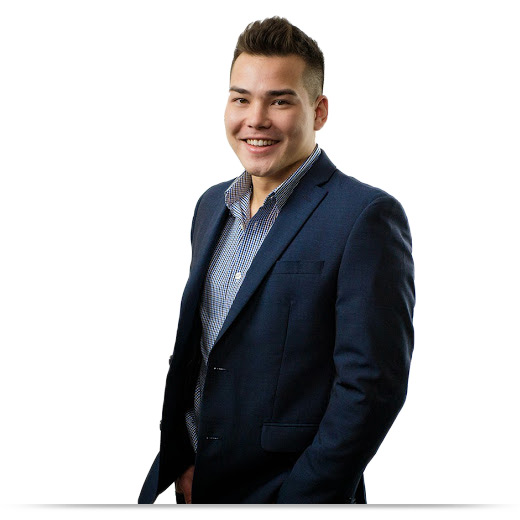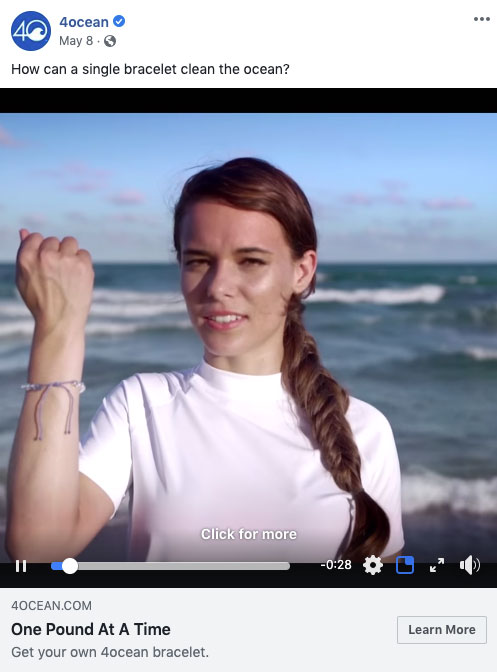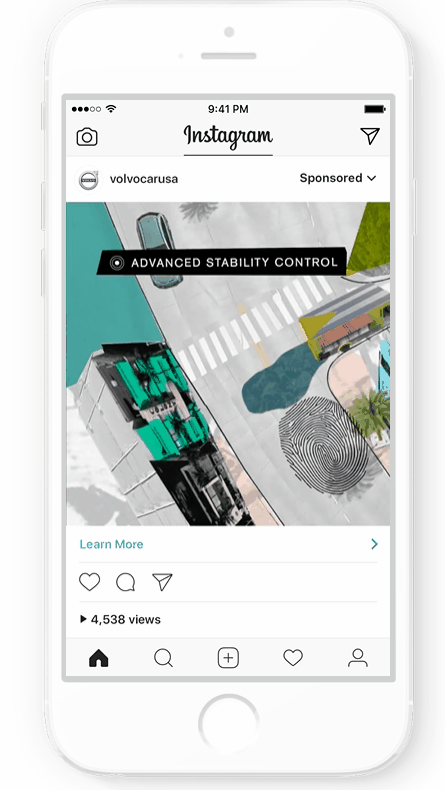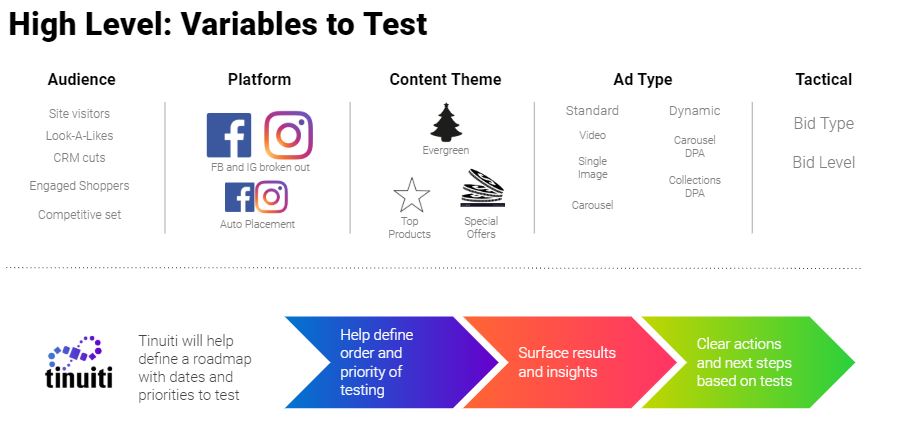The Power Of Ad Creative [And How It Impacts Your Social Strategy]


Creative performance has become the key strategic differentiator between the millions of brands and marketers that are chasing the same audiences across today’s digital channels.
In their latest media report, Forrester predicts that “advertisers will give up hypertargeting for a hyperfocus on creative,” and that “creative adtech will improve ad quality and cross-channel storytelling as cheap-looking, product-focused display ads decline.”
At Tinuiti, we know that advertisers [who want to stay competitive] need to renew their focus on the power of creative to offset future uncertainty around hypertargeting and increasing saturation of sponsored media.
“Increased volume of direct brands has led to increased audience overlap and competition. This calls for a renewed focus on leveraging creative as a strategic differentiator. Brands need to design with conversions in mind if they want to stand out from millions of creative agencies and competitors.“

– Jon Gregoire, Director of Marketing at CPC Strategy
Social platforms such as Facebook, Instagram, Snapchat and TikTok offer the latest in new opportunities for brands to showcase their best creative. But, how do brands keep up with the constant need for fresh creative? How do brands identify which creative resonates with their target audience?
In this exclusive Q&A, we interviewed Tom Olivieri, VP of Creative at Tinuiti and Avi Ben-Zvi, Director of Paid Social at Tinuiti to get their take on how brands can leverage creative content in their social advertising strategy to maximize ROI and build brand awareness.
Olivieri: Social and Creative are like a sports car. Creative is the engine that powers Social and all of the other components [like optimization and segmentation] are part of the steering wheel to ensure we get where we need to go. And pick up customers along the way.

Ben-Zvi: We consider creative the cornerstones to moving Paid Social performance. All these platforms are so visual that you really need to have content that stands out to ensure your brand is being seen and heard. Therefore, when we approach our audience testing structure, how we speak to these users with the content we serve them is of utmost importance; they can’t operate in two different silos.

Olivieri: Audience based ideas have a profound impact on how to approach the channel. Knowing you can create customized, relevant content in almost real-time that ladders up to a larger brand idea allows you to push the envelope of testing, learning and cadence.
Ben-Zvi: Creative is key for a brand’s social strategy. It often starts with a concept that we build a robust plan around. Ultimately, we’re putting many different creative variables at play with a clear testing cadence, and surfacing back to the client results and next steps. Therefore, the strategy is always evolving with our single variable/test and learn approach to creative.
Olivieri: Tinuiti is an idea-driven creative team that executes on any type of creative piece that makes sense for the audience. Whether that be an original produced video, animated ads, experience (canvas) ads, connected carousels and even now Augmented Reality ads. Many times it’s a combination of these that deliver the best results – but it always starts with a strong idea that can deliver both inspiration and action.

Ben-Zvi: As Tom mentions, we offer it all: different ad types across all the most relevant social channels. Over the last several years Social advertising has moved towards dynamic, and this continues to be the trend. Our team is at the forefront and developing assets with movement that are more compelling to users. This can include slight movement like a GIF that has an offer moving to call attention to the ad unit, or even something like stop motion graphics. In each case, our social team tests out what messaging works, what type of ad units work, and what are the nuances amongst the audiences within these tests.
Olivieri: Testing is the key to long-term creative success and true audience insight. We start with simple learnings like:
The key is to test single components so we can gain real insights. If brands test too much at once, we lose the ability to determine why something worked or didn’t work.
Ben-Zvi: We recently worked with an electronics brand who sells headphones and ear buds. We ran dozens of creative tests [working in tandem with the Creative side]. Some of these creative / social tests included:
THE CHALLENGE: Our main objective was to grow sales via Facebook/Instagram. Although the electronics brand had a wealth of product shots, they did not have access to any dynamic assets prior to working with Tinuiti.
THE SOLUTION: Tinuiti’s creative and social teams transformed the brand’s long-form video and static assets into GIFs. The new ads highlight the offers, but maintained the product image and branding up-front and clear.
THE RESULTS: After implementing dynamic creative, we saw a +17% increase in spend, +26% increase in revenue, and a +45% higher CVR.
Olivieri: One of the biggest mistakes we see are brands who think Social creative is the same as Display. If you treat your social creative like any other paid channel, you will fail.
Ben-Zvi: Another common mistake is testing too much at once! We see this all the time. Brands generate a lot of assets, throw it at the wall, and hope something sticks. When they see one creative asset work well they make assumptions about why it performed better. But without the data to back it up there are so many variables that could be at play. We take a ‘single variable’ approach and put a creative test in market with a hypothesis.
1. Motion creates emotion. Brands in 2019 should be incorporating video and animation creative to connect to their customers.Your creative doesn’t necessarily have to be a long TVC, but make sure there’s a dynamic element to draw a user’s eye to your ad.

2. Ideas first. Don’t push paid content without a strategy in place and make sure you have the data to support it.
3. Use Sequential messaging. Rather than pitch all your brand messaging in one ad, use sequential to drive from emotion to promotion in a series of ads.
4. Absolutely do not use stock creative. Authenticity is the key to unlocking performance.
5. Plan ahead. Just as you plan organic social, do the same planning for paid advertising and make sure your organic and paid strategies are in alignment.
6. Build for each channel. You don’t want to simply repurpose creative on social from your TVC or display ads. Make sure it’s native to the social platforms, and unique to each. You can even use ‘asset customization’ on Facebook to have the same piece of creative appear differently on Facebook feed versus Instagram Stories. On top of this – make sure your aspect ratios are correct and you’re taking up as much mobile real estate as possible.

7. Focus on 2-3 assets at a time against a given audience, while keeping some elements controlled. This way, you’ll learn which creative works vs. what doesn’t work on the creative side. [I.e., Headline A performed better than Headline B and Headline C]
8. For Dynamic Product Ads, don’t forget about the Collections format! This allows brands to be more creative and use a hero image/video that’s highly stylized, while still having your product catalog as part of the ad unit.
9. Always keep the user experience in mind. If you’re targeting cart abandoners, visualize the process and what they would want to see. If you’re a prospect, consider what will compel the shopper outside of promotions. Also be mindful of timely creative. If you’re pushing a holiday discount, call out events or special promotions that are happening during that time of the year.
10. Use positive reviews. If you’re brand or products is highly reviewed, use those reviews in your ad creative. Leverage customer quotes, add 5 star emojis and show how beloved your brands and products are.
“Paid Social is the most unique and exciting of all channels,” says Olivieri.
“These platforms give brands a chance to display deeper storytelling, while driving performance. The key is to have a strong story to tell. It’s not enough to just have creative assets – you need ideas. Be prescriptive about your tests and have your hypothesis about creative elements ready to go.”
For more on how to improve your creative & social strategy, email [email protected]
